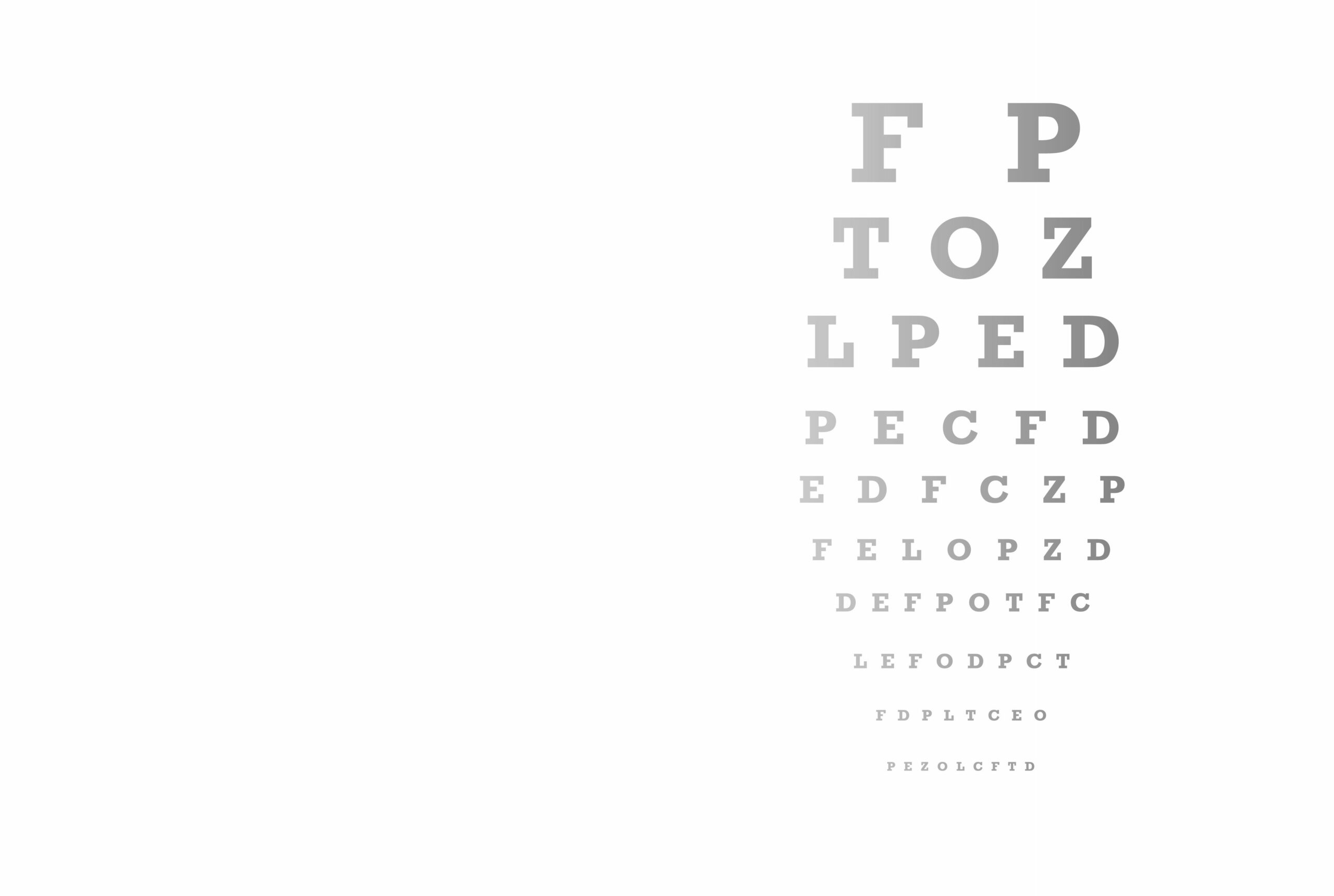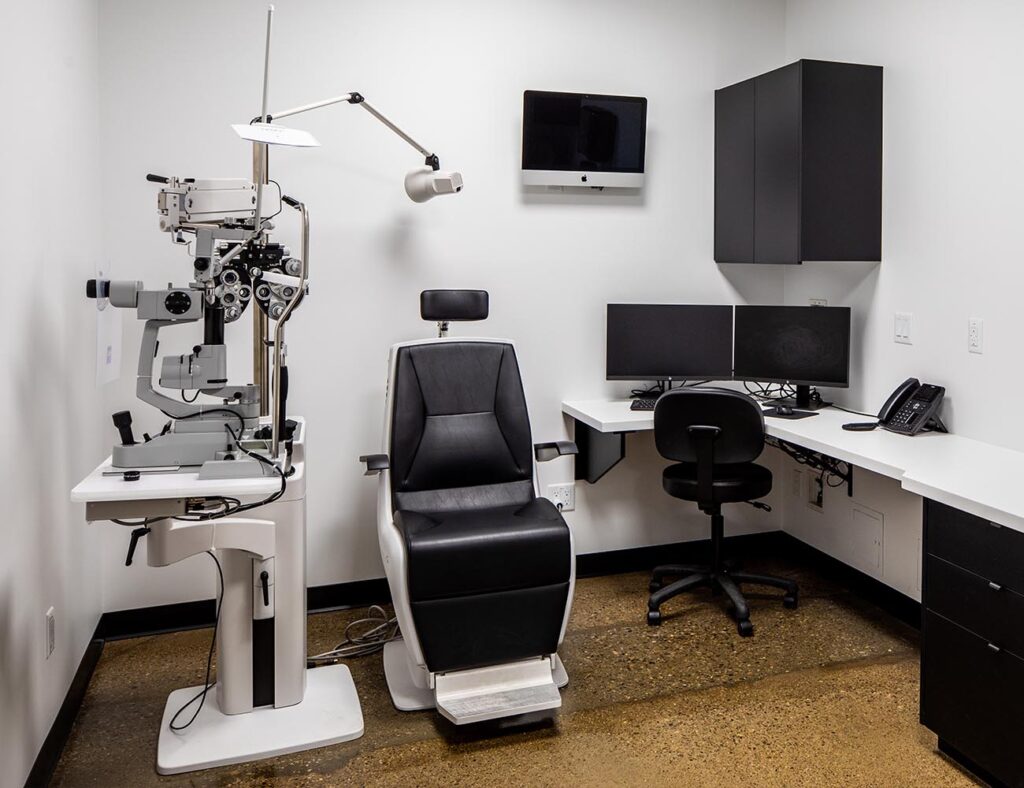
Services
Eye Exams

EYE EXAMS
Healthy Eyes
Regular eye exams are critical in the early detection of ocular diseases, including glaucoma and macular degeneration.
Our optometrists administer comprehensive eye exams, emergency eye exams, contact lens exams, diabetic eye exams, myopia prevention & pre and post-surgical assessments.

Comprehensive Eye Exam
A comprehensive eye exam assesses the visual system and the eye’s overall health. It involves testing the visual acuity and how the eyes work together, checking the glasses’ prescription, and diagnosing eye diseases. A comprehensive eye exam is recommended yearly for those under 19 years of age, those over 65 and every two years for adults in between. A child’s first eye exam is recommended as early as six months.
Conditions
Occular Health Conditions That May Be Detected During an Eye Exam
Cataracts
Cataracts are a clouding of the natural lens inside the eye. It causes blurred vision, decreased contrast, and glare around lights. It is often associated with age but can occur in younger individuals using certain medications (i.e. steroids) or having certain medical conditions (i.e. Diabetes).
Glaucoma
Glaucoma is a progressive disease that causes damage to the optic nerve. It often has no symptoms in the first stages but can lead to permanent vision loss if not treated early. These changes are challenging to detect by simply looking into the eye, so we rely on non-invasive imaging techniques for better visualization.
Age-Related Macular Degeneration
Age-related macular degeneration is a disease that damages the macula. It typically occurs later in life and can cause loss or distortion of the central vision since macular degeneration affects the deeper layers of the retina that aren’t as easy to visualize.
Diabetic Retinopathy
Diabetic retinopathy is a complication of diabetes that causes damage to the blood vessels in the retina or the growth of new abnormal blood vessels that can leak. Early diabetic retinopathy may have no symptoms, but the more advanced disease can cause decreased vision from retinal swelling or a retinal detachment.
Conjunctivitis (Pink Eye)
Conjunctivitis (or pink eye) is an inflammation of the transparent membrane that lines the white part of the eye and the eyelids. It causes redness, discharge, burning, or itching and is often very contagious. Bacteria and viruses can cause it, or allergies and treatment differ depending on the cause.
Myopia (Nearsightedness)
Myopia (or nearsightedness) occurs when light focuses in front of the retina rather than on it. This occurs because the cornea bends light too much or the eye is too long. Individuals with myopia have difficulty seeing distant objects clearly.
Hyperopia (Farsightedness)
Hyperopia (or farsightedness) occurs when light focuses behind the retina rather than on it. This occurs because the cornea bends light too little or the eye is too short. Individuals with hyperopia may have difficulty seeing near objects clearly or may have symptoms of near strain and frontal headaches.
Astigmatism
Astigmatism occurs when light focuses at two different points in the eye. This occurs because the cornea or lens has an irregular shape. Individuals with astigmatism have difficulty seeing objects at all distances clearly and may see elongated or shadowed images. It is often accompanied by myopia or hyperopia.
Presbyopia
Presbyopia occurs when the eye’s ability to focus on near objects decreases. It is a natural part of aging and occurs because the lens inside the eye loses its elasticity and ability to change shape. It typically begins in the mid-’40s and gradually declines until little to no focusing ability remains without the help of reading ads.
